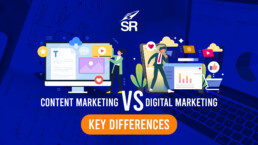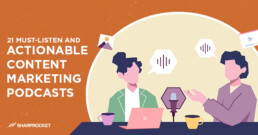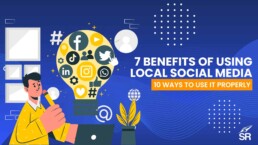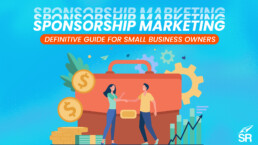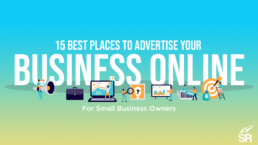Content Marketing VS Digital Marketing: Key Differences
As someone who has been in the digital marketing industry for a while, you may have come across the terms ‘content marketing’ and ‘digital marketing’ being used interchangeably.
However, these two concepts are not one and the same. They are quite different from each other, with content marketing forming a part of digital marketing.
In this article, we will discuss the key differences between content marketing and digital marketing so that you can better understand the two concepts.
Let's dig in...
What’s the difference between content marketing and digital marketing?
Definition of Content Marketing
According to Content Marketing Institute, Content marketing is a strategic marketing approach that is focused on creating and distributing valuable, relevant, and consistent content to attract and retain a clearly defined audience — with the ultimate goal of driving profitable customer action.
In other words, content marketing is about creating informative, entertaining, or inspiring pieces of content (e.g., blog posts, infographics, videos, etc.) that help your target audience somehow.
Content marketing aims to build a relationship with your audience so they can eventually become your customers or clients.
Content marketing is important in the customer journey as it helps educate your audience about your product or service, build trust, and establish authority. That's why your content must align with your buyer journey stages.
How Content Marketing is Used in Different Buyer Stages:
Awareness Stage: Top-of-the-funnel content that makes your target audience aware of their problem or need.
Content marketing is used in the awareness stage to attract attention and educate people about the existence of a problem or a need that they may have.
The goal here is to get your target audience to realize that they have a problem or need that your product or service can help them with.
For example, if you’re selling acne treatment products, your content marketing strategy in the awareness stage should be focused on creating blog posts, infographics, or videos about acne and its causes.
The aim is to get people searching for information about acne to find your content so that you can introduce them to your product.
Consideration Stage: Middle-of-the-funnel content that helps your target audience compare different solutions and make a decision.
Content marketing is used in the consideration stage to help people aware of their problem or need to compare different solutions and decide.
The goal is to get your target audience to shortlist your product or service as a solution to their problem or need.
For example, if you’re selling acne treatment products, your content marketing strategy in the consideration stage should be focused on creating blog posts, infographics, or videos that compare your product with other acne treatments in the market.
The aim is to get people considering different acne treatments to find your content so that you can convince them to try your product.
Decision Stage: Bottom-of-the-funnel content that helps your target audience make a purchasing decision.
Content marketing is used in the decision stage to help people who are considering your product or service make a purchasing decision.
The goal is to get your target audience to buy your product or service.
For example, if you’re selling acne treatment products, your content marketing strategy in the decision stage should be focused on creating blog posts, infographics, or videos that highlight the features and benefits of your product.
The aim is to get people considering your product to find your content so that you can convince them to buy it.
To make an impact, your content marketing strategy should focus on creating informative, entertaining, or inspiring pieces of content that help your target audience somehow.
5 Advantages of Content Marketing
According to Hubspot, in 2022, a whopping 90% of marketers plan to continue spending the same amount in the channel as they are now. That being said, it's evident that many businesses see the advantages of content marketing and how it can help them reach their goals.
Let's take a look at some of the benefits of content marketing:
1. Helps you build trust and establish authority.
One of the main advantages of content marketing is that it helps you build trust and establish authority with your target audience.
When you create informative and helpful pieces of content, people will start seeing you as an industry expert. As a result, they will be more likely to trust and do business with you.
2. Helps you generate leads.
Another advantage of content marketing is that it can help you generate leads.
When you create quality content, people will be more likely to visit your website and give you their contact information.
3. Helps you build relationships.
In addition to generating leads, content marketing can also help you build relationships with your target audience.
People will see you as a valuable resource when you create helpful and informative content. As a result, they will be more likely to keep returning to your website and doing business with you.
4. Helps you save money.
Content marketing can also help you save money.
Compared to other marketing channels, content marketing is relatively inexpensive. You can even do it yourself if you have the time and resources.
5. Helps you reach your target audience.
Finally, content marketing can help you reach your target audience.
When you create quality content, it will be shared by people interested in it. As a result, you can reach more people than you would with other marketing channels.
Definition of Digital Marketing
Digital marketing is an umbrella term that covers all marketing efforts that use an electronic device or the internet.
“Businesses leverage digital channels such as search engines, social media, email, and their websites to connect with current and prospective customers.” - Hubspot
With how accessible the internet is today, would you believe me if I told you the number of people who go online every day is still increasing?
Digital marketing includes a wide range of marketing activities, such as:
- Search engine optimization (SEO)
- Search engine marketing (SEM)
- Content marketing
- Social media marketing (Facebook, Twitter, LinkedIn, etc.)
- Email marketing
- Mobile marketing
- And more!
Digital marketing is important because it helps businesses reach their target audiences where they are most likely to be found -- online.
5 Advantages of Digital Marketing
According to Wordstream, the worldwide digital advertising and marketing market was expected to be $350 billion in 2020, while it will rise to $786.2 billion by 2026.
Seeing just how vast the digital marketing industry is, it's no surprise that digital marketing has many advantages. Here are some of the most notable ones:
1. Digital marketing is more cost effective than traditional marketing.
As I noted earlier, one of the biggest advantages of digital marketing is that it's more cost effective than traditional marketing.
With traditional marketing, businesses have to spend money on things like print ads, radio ads, TV ads, and events.
With digital marketing, businesses can reach their target audiences at a much lower cost. Many digital marketing activities are free or only cost a small amount.
2. Digital marketing is more targeted than traditional marketing.
Another advantage of digital marketing is that it's more targeted than traditional marketing.
With traditional marketing, businesses typically advertise to a large audience in the hope that they will reach their target market.
With digital marketing, businesses can use data to show ads to people more likely to be interested in them. This allows businesses to save money and reach their target audiences more effectively.
3. Digital marketing is more engaging than traditional marketing.
Digital marketing is also more engaging than traditional marketing.
With traditional marketing, businesses typically rely on ads to reach their target audiences.
With digital marketing, businesses can use content to reach their target audiences. Content is more likely to engage people than ads, so it's a more effective way to reach your target market.
4. Digital marketing is more measurable than traditional marketing.
Another advantage of digital marketing is that it's more measurable than traditional marketing.
With traditional marketing, businesses typically rely on gut feeling to make decisions.
With digital marketing, businesses can track data and use it to make informed decisions. This allows businesses to save money and make better decisions about their marketing efforts.
5. Digital marketing is more flexible than traditional marketing.
Finally, digital marketing is more flexible than traditional marketing.
With traditional marketing, businesses typically commit to a certain amount of time or money before seeing results.
With digital marketing, businesses can start small and scale up as they see results. This allows businesses to save money and be more flexible in marketing efforts.
Digital marketing is a powerful tool to help businesses reach their target audiences. Now is the best time to start if you're not using digital marketing.
In a nutshell, both content marketing and digital marketing are two effective methods that complement each other to help businesses achieve their marketing goals. Start using them today and see how they can help your business grow!
21 Must-Listen and Actionable Content Marketing Podcasts
Podcasting has become increasingly popular in the last few years, and for a good reason. The beauty of podcasting is that it allows you to tell stories and have conversations with people from all walks of life, no matter where they are. It’s a great way to dive deeper into a subject, hear personal stories, and get to know experts in the field.
Not only does podcasting provide an interesting platform for storytelling and conversations, but it also allows you to build a community with your listeners. Podcasting is a great way to connect with people interested in the same topics as you, creating an opportunity to share information and collaborate.
Podcasting also allows you to reach a broader audience than many other mediums. With podcasts, there’s no need for expensive production costs, long hours of editing, or geographical constraints. All you need is an idea and a microphone — anyone with access to the internet can listen in on your podcast from anywhere in the world.
In this article, we will explore why podcasting matters in today’s digital landscape and list content marketing podcasts worth checking out. So, let’s dive right in!
Benefits of Podcasting
Podcasting has many benefits, making it an invaluable tool for content marketers and digital entrepreneurs. Here are some of the key advantages of podcasting:
1. Reach a wide audience.
Podcasts can easily be shared across multiple platforms, which allows you to reach a wider audience than many other mediums. In fact, On average, US podcast fans tune in to 6 podcasts each week, providing an immense opportunity for radio hosts and creators, according to Infinite Dial.
2. Build relationships.
Podcasting is an effective way to connect with people who share your interests and build relationships over time.
3. Increase engagement.
Engaging with listeners is easier when they can hear your voice and feel the emotion in your conversations.
4. Drive traffic.
Podcasts can help drive more website traffic and lead to increased sales. With over 2 million podcasts online daily, the competition is fierce, but the rewards are great.
5. Cost effective.
It’s a relatively inexpensive way to spread the word about your business or content. Statista has released astonishing figures, with the total revenue generated through podcast ads skyrocketing to an incredible $1.3 billion in 2021 - a staggering increase of nearly half a billion dollars from 2020! This immense figure is expected to keep rising precipitously over the coming years.
6. Flexibility
Podcasting allows for the content format, length, and frequency flexibility. As a content writer, you can create a show that is tailored to your specific needs and preferences and easily incorporate it into your overall content strategy.
21 Content Marketing Podcasts Worth Checking Out:
1. This Old Marketing
Hosted by Joe Pulizzi and Robert Rose, this podcast is all about content marketing tips and best practices. In every episode, Joe and Robert engage in a lively debate on the current content marketing topics while sharing ruminations on industry trends.
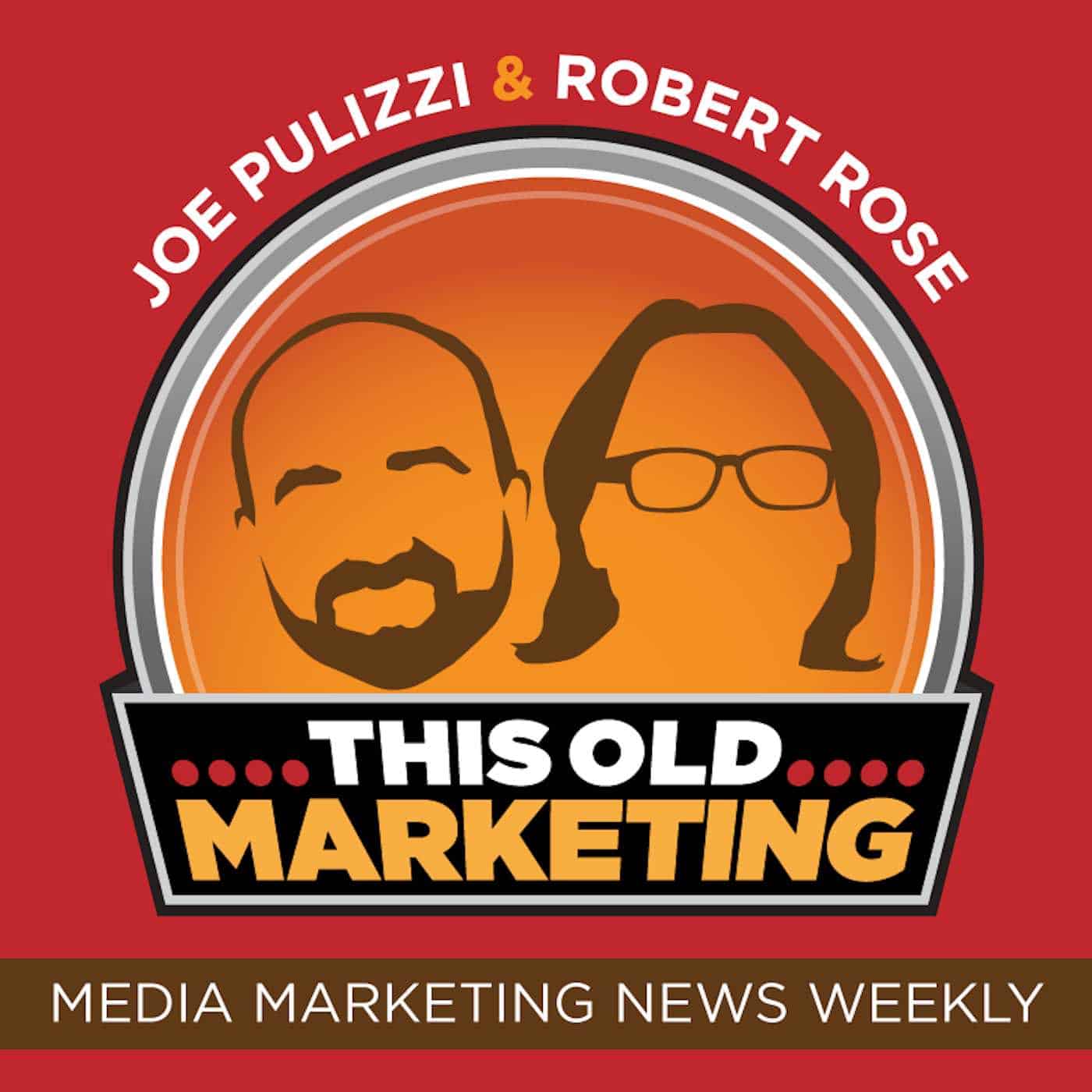

Frequency: Weekly
Episode Length: Average of 60 minutes
Recommended Episode: Is AI Content a Race to the Bottom?
2. Copyblogger FM
Hosted by Sonia Simone and Robert Bruce, this podcast is all about content marketing, copywriting, and getting your message out into the world. It features interviews with top industry experts and practical tips on creating an effective content that will get you noticed.


Frequency: Weekly
Episode Length: Average of 30 minutes
Recommended Episode: How to Write Content That Resonates
3. Content and Conversation
Developed by our Siege Media experts, Content and Conversation is an exclusive podcast featuring founder Ross Hudgens and director of marketing Drew Page as they discuss everything from content marketing to SEO to email outreach. If you want deep insights into mastering online promotion - this is the perfect listen!
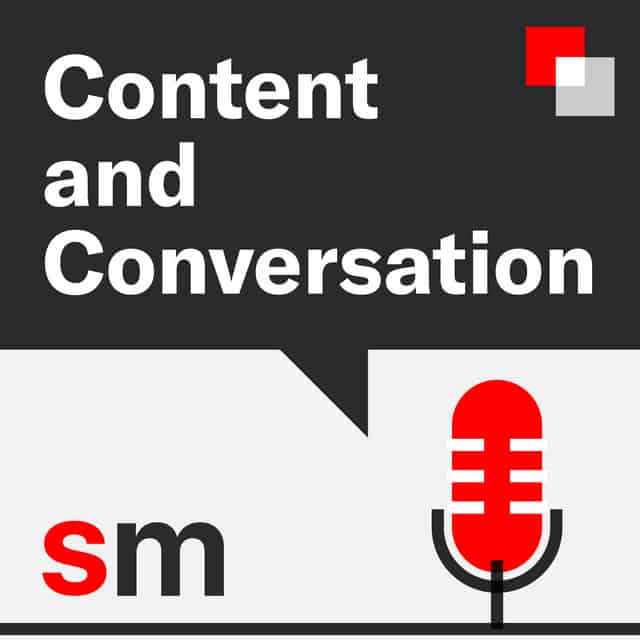

This podcast is designed for content marketers who want to gain in-depth field knowledge and achieve maximum success.
Frequency: Weekly
Episode Length: Average of 30 minutes
Recommended Episode: Why You Can’t “Test” Content Marketing
4. Social Pros Podcast
If you want to make your content more engaging and discover new ideas to leverage social media, this is the perfect podcast! Hosted by Anna Hrach and Daniel Lemin, this podcast features interviews with some of the best minds in the social media industry.
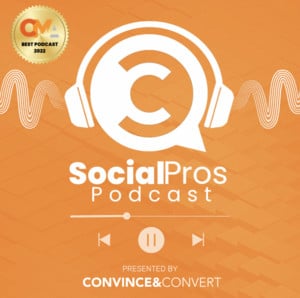

Frequency: Weekly
Episode Length: Average of 60 minutes
Recommended Episode: Greatest Hits: How AI Impacts Social Media
5. The Marketing Book Podcast
This is a great podcast for content marketers who want to stay up-to-date with industry trends. Host Douglas Burdett brings you engaging conversations with best-selling authors in the marketing field and explores some of the most relevant topics.
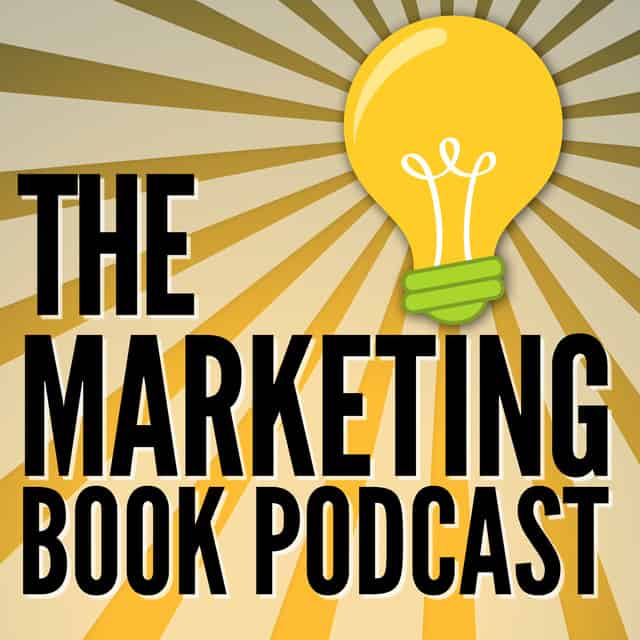

Frequency: Monthly
Episode Length: Average of 60 minutes
Recommended Episode: Content Chemistry by Andy Crestodina
6. Content, Inc.
This podcast is hosted by Joe Pulizzi and is all about content marketing strategies and insights. With each episode, you’ll learn how to use content to create value in your business and develop an effective content strategy that will drive leads and sales.
Joe draws from his experiences and those around him to provide deep, insightful reflections about the entrepreneurial world. By sharing these stories of success and failure, Joe helps us understand how to overcome life's challenges with determination and resilience.


Frequency: Bi-weekly
Episode Length: Average of 5–15 minutes
Recommended Episode: Stop “The Hustle” and Start “The Focus”
7. We Earn Media
With each episode, host Britt and Jackie bring you the latest news and insights on content marketing. Hear from some of the best minds in the industry as they discuss all things related to content creation, storytelling, and more!
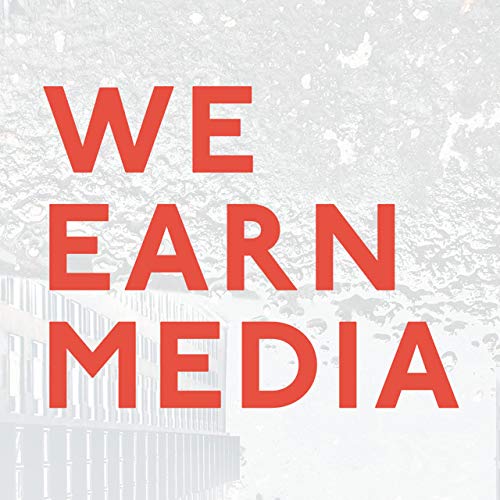

Frequency: Weekly
Episode Length: Average of 30 minutes
Recommended Episode: Automated cars are good, but automated emails are bad!
8. The Animalz Content Marketing Podcast
This podcast is designed for content marketers who want to stay ahead of the curve. Hosted by Ryan Law, Director of Marketing, and Devin Bramhall, CEO, each episode features interviews with top professionals from the content marketing industry and provides actionable tips on improving your content strategy.
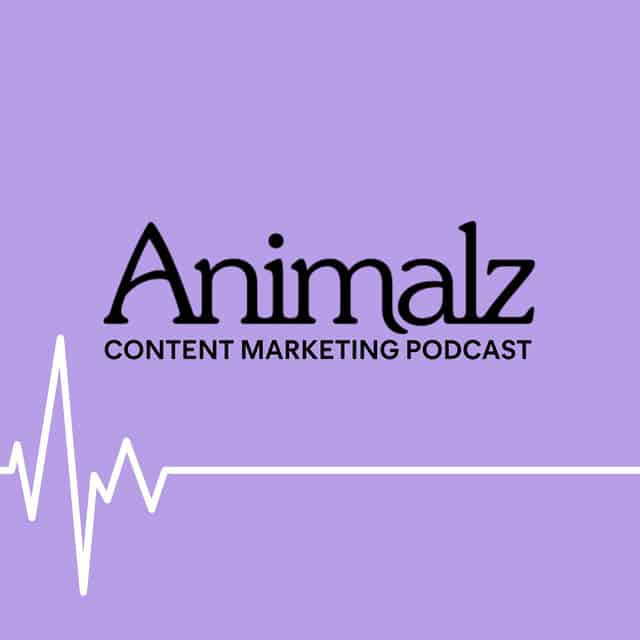

Frequency: Weekly
Episode Length: Average of 30 minutes
Recommended Episode: The Copycat Content Crisis
9. Noah Kagan Presents
This podcast is all about marketing, business, and lifestyle. Hosted by entrepreneur Noah Kagan, it features interviews with experienced entrepreneurs who share their insights on success, failure, and everything.
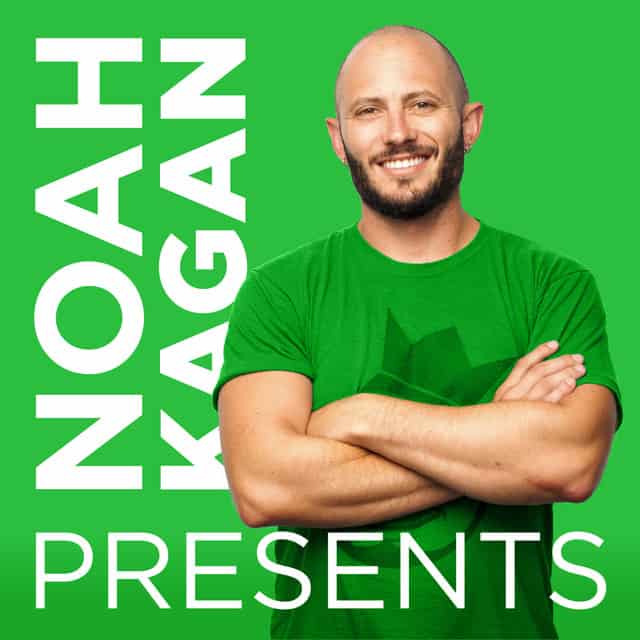

Frequency: Weekly
Episode Length: Average of 30 minutes
Recommended Episode: How to Start a Billion Dollar “Boring” Business (w/ Paul Orfalea)
10. SEO Podcast: The Unknown Secrets of Internet Marketing
Hosts Chris Burres and Matt Bertram share tips, tricks, and ideas for content marketing success. Listen to this podcast to learn how to get more traffic through search engine optimization (SEO) and other internet marketing tactics.
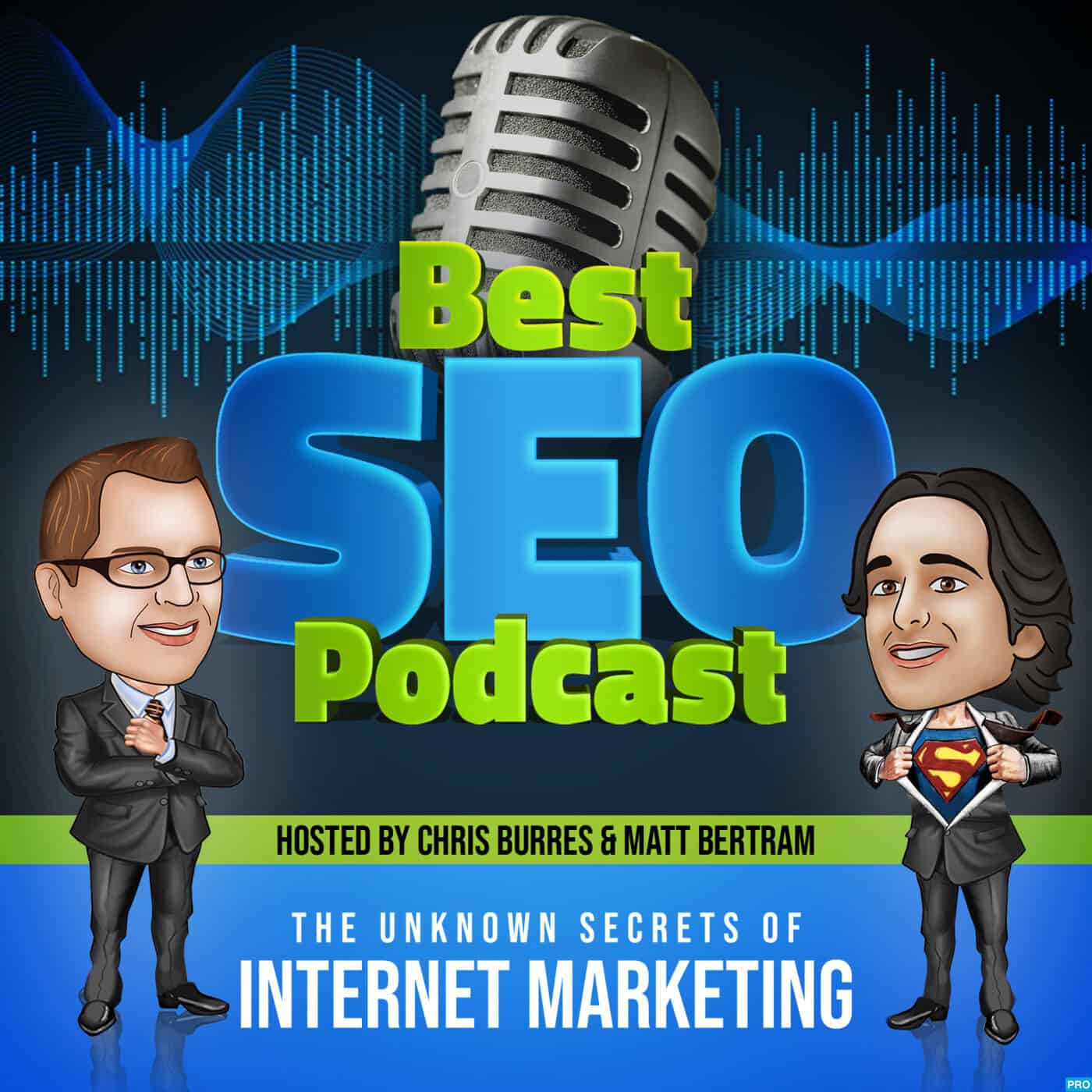

Frequency: Weekly
Episode Length: Average of 45 minutes
Recommended Episode: 10 Content Marketing Skills You Need to Master
11. Marketing Companion
Mark Schaefer and Brooke Sellas host Marketing Companion, a podcast that strives to bring fun back into marketing. Each episode's lively dialogue is chock-full of hilarious jokes yet peppered with interesting marketing insights - you'll never tire from listening!
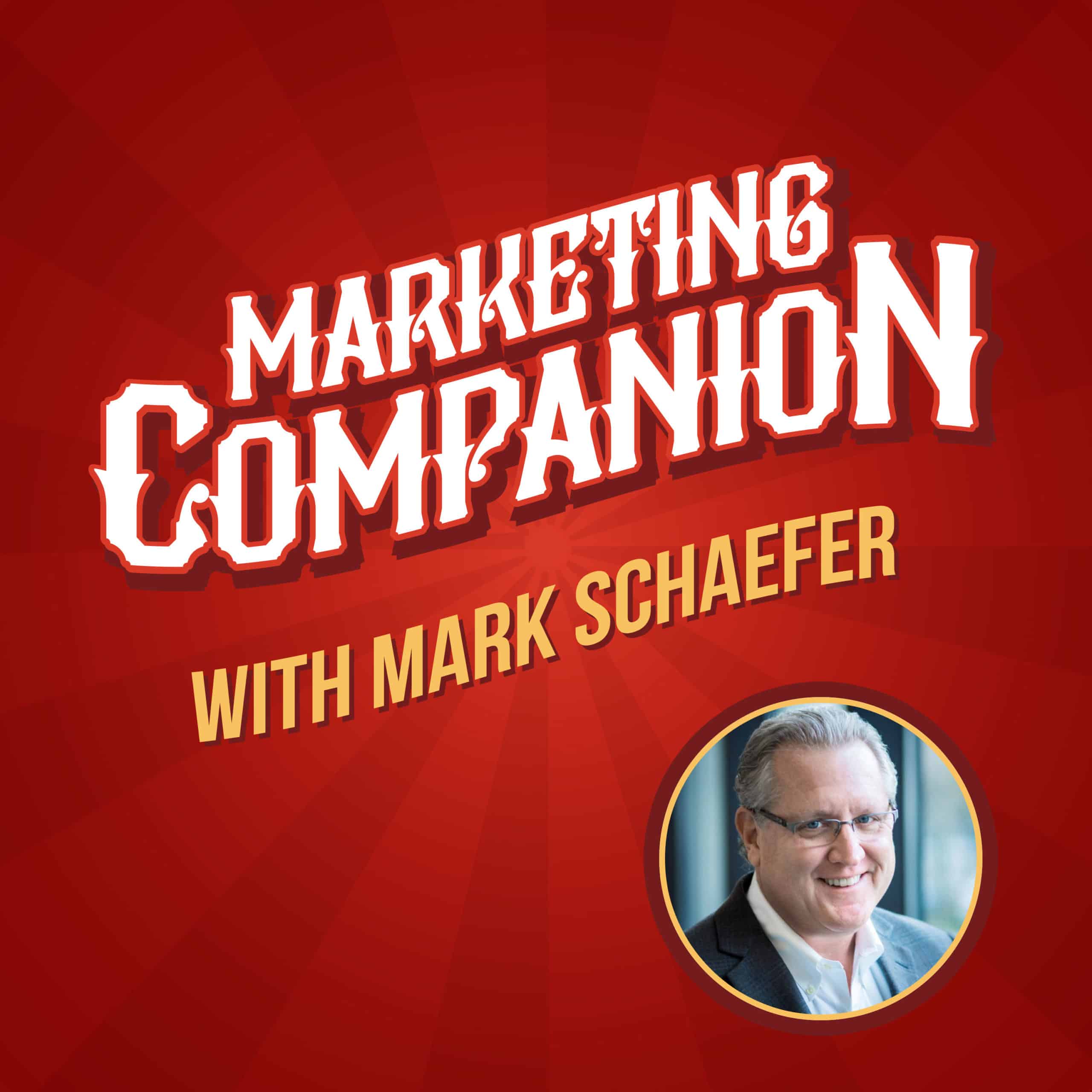

Frequency: Weekly
Episode Length: Average of 45 minutes
Recommended Episode: Is there still a place for blogging?
12. Marketing School
If you're looking for a no-nonsense, actionable podcast with quick and easy marketing tips, this is the one for you. Hosted by Neil Patel and Eric Siu, each episode contains information that will help you become a better marketer. With the knowledge and experiences gathered throughout their separate yet flourishing content marketing journeys, the two hosts are equipped to pass on valuable lessons to help marketers - whether seasoned or newbies - flourish.


Episode Length: Average of 10 minutes
Recommended Episode: How to Skyrocket Your Search Traffic Without Spending a Cent
13. The Blogging Millionaire
The host of this podcast, Brandon Gaille has been blogging for over a decade and has made millions in the process. Each episode discusses topics related to growing your blog or online business, including content creation strategies, email marketing tactics, SEO tips, and more.
Frequency: Weekly
Episode Length: Average of 30 minutes
Recommended Episode: Optimizing Your Research and Writing Time
14. The Business of Story
This podcast is a must-listen for anyone interested in content creation and storytelling. Hosted by Park Howell, each episode features interviews with successful entrepreneurs, filmmakers, authors, and other creatives. The podcast explores the power of storytelling and how it can be used to grow businesses in the digital age. He aims to help companies engage with their public through meaningful and powerful content.
Frequency: Weekly
Episode Length: Average of 30 minutes
Recommended Episode: How to Grow Your Business With Bewitching Brand Storytelling
15. Experts on the Wire
In Experts on the Wire, Dan Shure dives deep into SEO while exploring related topics like content marketing, social media, and ranking. He hosts various industry specialists to share their insights into these areas, making it a great source of information for anyone interested in digital trends.
Frequency: Bi-Monthly
Episode Length: Average of 45 minutes
Recommended Episode: How to Escape Content Mediocrity
16. Online Marketing Made Easy
Podcast host Amy Porterfield provides actionable advice and strategies to help you build an online business. With topics ranging from email marketing, webinars, content creation, and more - this podcast is a great resource for entrepreneurs looking to level up their digital presence.
Frequency: Weekly
Episode Length: Average of 45 minutes
Recommended Episode: How to Create a Profit-Driven Lead Magnet to Boost Sales
17. Social Media Examiner Podcast
Hosted by Michael Stelzner, this podcast covers the latest trends and news related to social media and how businesses can leverage it for their products. With in-depth interviews with experts and industry leaders, you’ll be sure to pick up some useful tips on optimizing your social media presence.
Frequency: Weekly
Episode Length: Average of 60 minutes
Recommended Episode: Search Engine Optimization: How to Rank Number One on Google
18. The Tim Ferriss Show
Hosted by the author of The 4-Hour Workweek, this podcast is centered around deconstructing world-class performers. Through conversations with some of the most interesting minds, Ferriss uncovers their tips and tricks on productivity, success, longevity and more.
Frequency: Weekly
Episode Length: Average of 90 minutes
Recommended Episode: Tools of Titans - The Tactics, Routines, and Habits of Billionaires, Icons, and World-Class Performers
19. The Science Of Social Media
Popular with its social media tool, Buffer, this podcast dives into topics focusing on the science behind successful social media campaigns. The episodes are packed with actionable advice covering everything from content strategy to analytics.
Frequency: Weekly
Episode Length: Average of 45 minutes
Recommended Episode: How to Get Organic Reach Back On Social Media Platforms Even After Algorithm
20. Marketing Scoop Podcast by Semrush
Get the latest insights and trends in digital marketing from this weekly podcast. With topics that cover SEO, content marketing, influencer marketing, and more - it’s a great source of information for growing your online business.
Frequency: Weekly
Episode Length: Average of 30 minutes
Recommended Episode: How to Maximize Your Content
21. Marketing Over Coffee
Marketing Over Coffee is a valuable resource for anyone looking to stay on top of the latest trends in marketing. It covers everything you need, from social networks and SEO to copywriting and offline campaigns.
Whether you're a beginner or an experienced marketer, there's something new for everyone! Plus, it keeps your skills sharp by providing practical advice that can be implemented right away.
Hosts Christopher S. Penn and John J. Wall provide a humorous and informative take on digital marketing.
Frequency: Weekly
Episode Length: 30 minutes
Recommended Episode: Simon Sinek: Start With Why
Now that you have a good idea of the top digital marketing podcasts, you can choose one or two to start listening to. If you're looking for actionable advice, in-depth interviews with industry experts, and the latest trends, these are the perfect resource for sharpening your digital marketing skills!
7 Benefits of Using Local Social Media [+10 Ways to Use It Properly]
With almost 4 billion social media users across all platforms, it's no wonder that businesses are jumping on the bandwagon to connect with their target audiences. Users spent about 95 minutes per day on social media in 2022 - which is higher than ever.
Local businesses, in particular, can benefit greatly from utilizing social media platforms. For example, 2/3 of Facebook users say they are more likely to buy from a small or medium-sized local business they can connect with on the site and visit a local business page at least once weekly.
This only means that if you're not utilizing social media for your local business yet, you're missing out on a lot of potential customers.
What is Local Social Media?
Local social media refers to using social media platforms to connect with potential and current customers who live close to your business.
This could include anything from creating a Facebook page for your business and sharing content that is relevant to your local audience to using Twitter to connect with other businesses and individuals in your area.
Here's a list of social media channels you can use for your local social media marketing efforts:
- Snapchat
- Tiktok
There are a number of different ways that you can use local social media to benefit your business, which we will touch on later. But first, let's take a look at some of the benefits of using social media for your local business.
If you're not sure how your business can take advantage of social media, check out these seven benefits of using local social media.
What are the Benefits Of Using Social Media?
1. Reach a Wider Local Audience
The first and most obvious benefit of using social media for your local business is that it allows you to reach a wider local audience.
With over 2 billion active monthly users, Facebook alone gives you access to a larger audience than any other platform. And with 64% of American adults using social media, chances are good that your target customers are already on one or more platforms.
In order to capture these local social media audiences, brands usually invest in Facebook advertising. According to a report, 80% of small businesses use Facebook Advertising to reach their target audiences.
2. Increase Brand Awareness and Recognition
Another benefit of using social media for your local business is that it can help increase brand awareness and recognition.
When customers see your business pop up in their social media feeds, they'll start to become more familiar with your brand. And the more they see your brand, the more likely they are to remember it and consider it when they need your products or services.
3. Improve SEO Rankings
Social media can also help improve your website's SEO rankings.
Google considers social signals when determining where to rank websites in search results. So the more active you are on social media, the higher your website is likely to rank.
It'll be easier for Google to index your website if you have social media profiles because your website will be linked to those profiles.
4. Generate Leads and Sales
One of the main goals of any business is to generate leads and sales, and social media can help with that.
Since social media platforms are a great way to increase brand awareness and connect with potential customers, they can also be used to generate leads and sales.
In fact, social media has been shown to be one of the most effective channels for generating leads and sales. A study by HubSpot found that social media generates more leads than any other marketing channel, and another study found that social media is the second-most effective channel for generating sales.
5. Build Better Relationships with Customers
Social media is also a great way to build better relationships with your customers.
When you interact with customers on social media, you have the opportunity to show them that you're more than just a business - you're also a real person who cares about their needs and concerns.
You can use social media to address customer concerns, offer helpful advice, and build relationships that will make them more likely to do business with you in the future.
6. Get Better Customer Insights
Social media can also be used to get better insights into your customers.
You can use social media listening tools to track what people say about your brand, industry, and competitors. You can also use social media to conduct customer surveys and gather feedback about your products or services.
This information can be used to improve your marketing strategies and make better decisions about how to serve your customers.
7. Stay Ahead of the Competition
Finally, social media can help you stay ahead of the competition.
By monitoring what your competitors are doing on social media, you can stay up-to-date on their latest marketing campaigns and strategies. You can also use social media to learn about new products or services they're offering.
This information will give you a competitive advantage and help you make sure that your business is always one step ahead.
10 Ways to Use Local Social Media
If your goal for this year is to improve your local social media, here are 10 ways you can utilize social media platforms to reach your audiences locally:
1) Use social media advertising to target local customers.
Running social media ads is one of the most common practices big brands use in order to reach more local audience members. By targeting your ads specifically to people in your city or town, you can ensure that only locals see them. This is what makes Social media ads effective - it allows you to be very specific with your audience targeting.
For example, on Facebook, the platform allows you to set your target location by city, state, or country. You can also set the distance radius from your business location that you want your ad to reach - between 10 and 50 miles around a point you set.
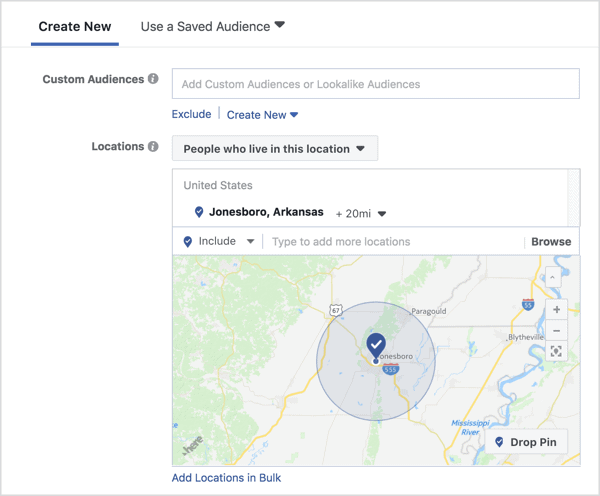

The same goes with Instagram - by using different types of Instagram ads, you can target people based on their location and other factors such as interests, age, gender, and even behavior.
2) Use geo-tagging to make your posts more discoverable to local audiences.
Geo-tagging is the process of adding your location to your social media posts. This can be done by tagging your location on the post itself or by adding your location to your profile so that all of your posts are automatically geo-tagged.
Geo-tagging makes your posts more discoverable to people who are searching for content in a specific location. For example, if someone is searching for "restaurants in New York," and your post is geo-tagged as being in New York, it's more likely to show up in the search results.
This is a great way to reach more local people who are interested in what you have to say. It's also a good way to connect with other local businesses and influencers.
3) Use social media to improve your website's SEO rankings.
Optimizing your social media channels for local SEO is a great way to improve your website's search engine rankings. This means ensuring that your social media profiles are completed and up-to-date and using relevant local SEO keywords in your posts.
It also means claiming your business listing on directories like Google My Business, Yelp, and Bing Places. These listings help improve your visibility in local search results and give you another avenue to connect with potential customers.
4) Use social media to drive traffic to your website.
One of the best ways to use social media for business is to drive traffic back to your website. This can be done by including links to your website in your posts and bio and using effective calls to action.
Calls-to-actions are a great way to encourage people to visit your website. They can be used to promote a specific product or service or simply get people to explore your site further.
It's one of the most underrated content marketing tactics, but it's very effective.
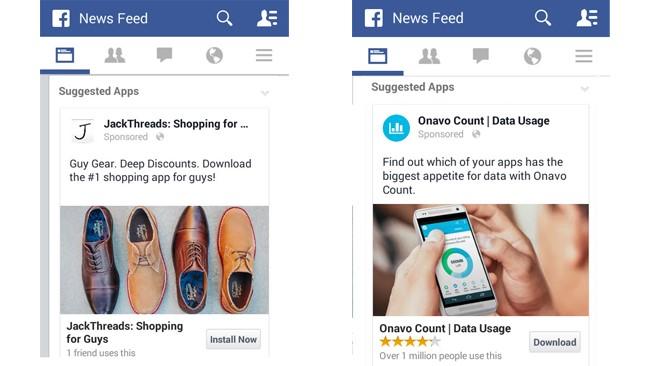

5) Use social media to create local partnerships.
Partnering with other local businesses is a great way to reach new audiences and promote your business. These partnerships can take many forms, but they typically involve some type of cross-promotion.
For example, you might agree to feature another business on your social media channels or to include a coupon for their product or service in your next newsletter. In exchange, they agree to do the same for you.
This is a great way to reach new people without spending any money on advertising. It's also a great way to build relationships with other local businesses.
6) Use local social media to retarget your existing customers
The good thing with local social media is that it does not only allow you to reach new audiences but also allows you to retarget your existing customers through remarketing.
This can be done by running ads that target people who have visited your website or interacted with your brand in some way. This is a great way to improve customer retention rates and increase sales and leads.
Retargeting can be done on all of the major social media platforms, and it's a very effective way to reach your target audience.
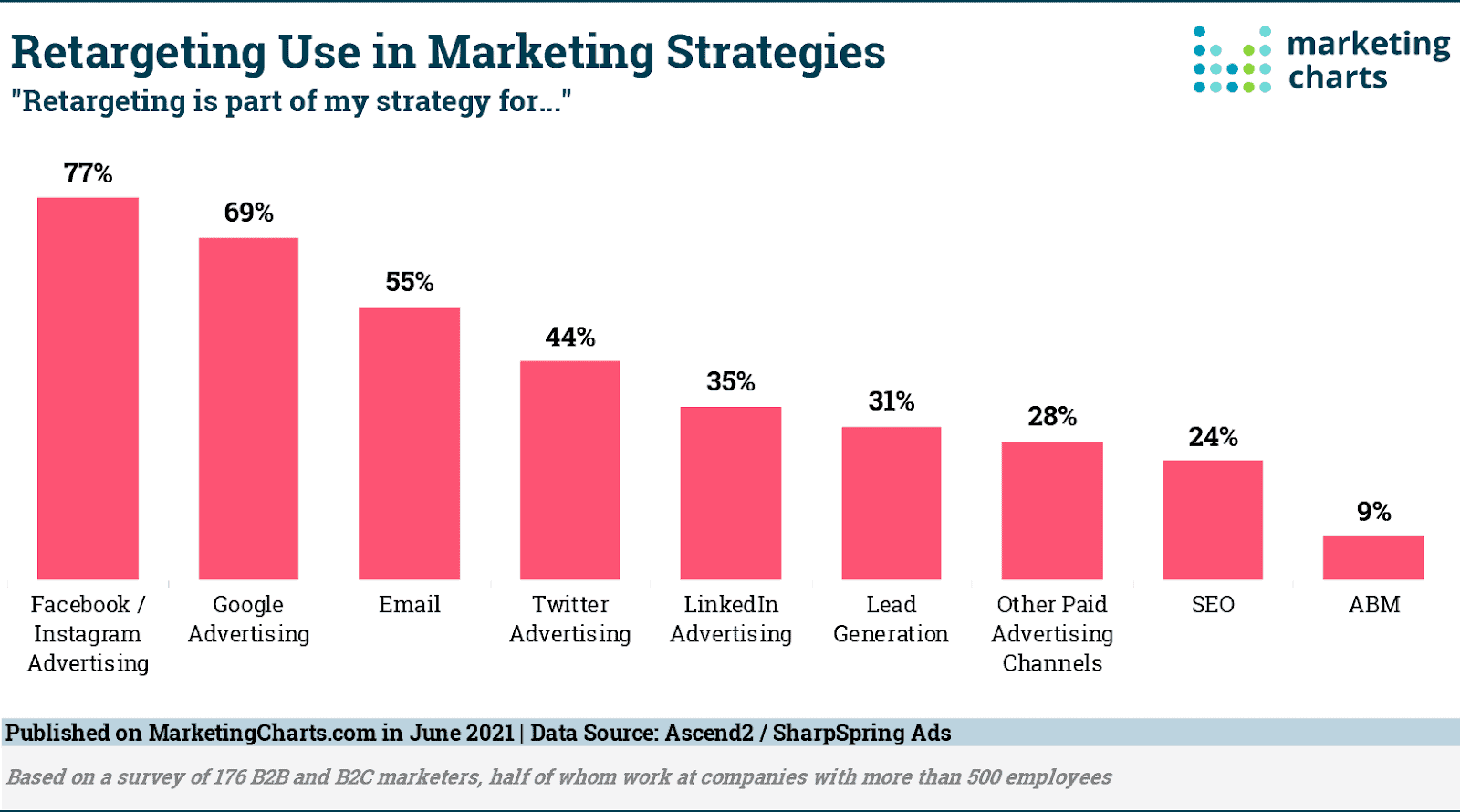

7) Use social media to host local events.
Another great way to use social media for business is to host local events. This is a great way to connect with potential customers and build relationships with other local businesses.
Local events can be anything from product launch parties to charity fundraisers. They can be small and intimate, or they can be large and public. But no matter what, they're a great way to connect with your community and promote your business.
You can create social media groups, such as Facebook groups or events to host your local business events for free or with very little money. You can run ads to promote these groups and events to potential attendees.
This is a great way to reach new people and promote your business at the same time.
8) Use social media to generate user-generated content (UGC).
User-generated content is a great way to connect with potential customers and promote your business. This type of content is created by people talking about your brand, which can be very valuable.
UGC can take many forms, but some of the most common are reviews, testimonials, social media posts, and blog comments. This type of content is incredibly valuable because it's coming from real people who have had a positive experience with your business.
This will help you increase your brand mentions across all social channels. By encouraging your customers and followers to create UGC, you can get your brand in front of more people and improve your chances of converting them into customers.
9) Use social media to run local contests and giveaways.
Local contests and giveaways are a great way to connect with potential customers and promote your business. They're also a lot of fun and can be a great way to build relationships with other local businesses.
Contests and giveaways can take many forms, but they typically involve giving away a prize in exchange for some type of interaction. For example, you might give away a free product or service in exchange for people sharing your contest on social media.
This is a great way to increase your brand awareness and reach new people. And, if you partner with other local businesses, you can also build relationships and promote each other's businesses.
10) Use social media to connect with local influencers.
Local influencers are people who have a large following on social media, and they can be a great way to reach new people.
If you can connect with local influencers and get them to promote your business, you can reach a whole new audience. This is a great way to increase your brand awareness and drive more traffic to your website or store.
There are a few different ways to connect with local influencers. You can reach out to them directly or use a tool like BuzzSumo to find influencers in your area.
Once you've found some local influencers, you can reach out to them and see if they're interested in promoting your business. If they are, you can work out a mutually beneficial agreement where they promote your business to their audience in exchange for some type of compensation.
If you want to find local influencers on social media, we'll detail it in the next section.
How to Find Local Social Media Influencers
Influencer marketing in 2022 is no longer a new concept. In fact, it's one of the most effective marketing strategies out there.
But with so many influencers to choose from, it can be tough to know where to start. That's why we've put together a list of tips to help you find the right local social media influencers for your business.
1) Search your own following.
The first place to start is your own social media following. Look through your list of followers and see if there are any influencers in your area.
2) Use a tool like BuzzSumo.
BuzzSumo is a great tool for finding influencers in your industry. Just enter a keyword related to your business, and it'll show you a list of influencers who have written about that topic.
3) Check out local hashtags.
Another great way to find local social media influencers is to search for local hashtags. For example, if you're a business in Los Angeles, you could search for #LAinfluencer or #LAblogger.
This will give you a list of people already talking about your city and likely to be influencers in your area.
4) The basic -- Just Google it.
Finally, you can also use Google to find local social media influencers. Just enter a search like "top social media influencers in Los Angeles" or "Los Angeles fashion bloggers."
This will give you a list of influencers in your area, and you can reach out to them and see if they're interested in working with you.
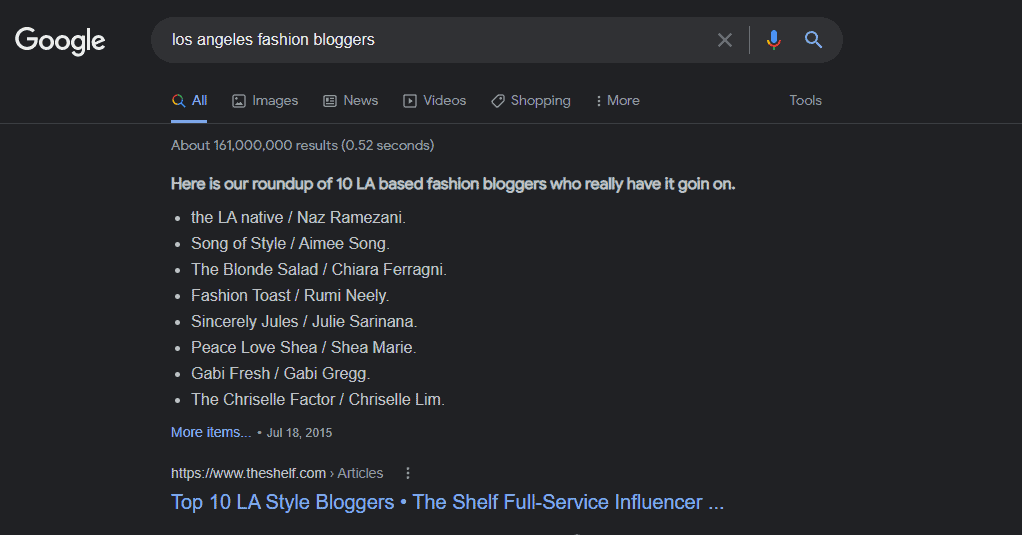

Reaching Out to Local Social Media Influencers
Once you've found some local social media influencers, it's time to reach out to them and see if they're interested in promoting your business.
The best way to do this is to send them a personal message. Just introduce yourself and your business, and explain why you think they would be a good fit for promoting your products or services.
Be sure to include some information about your offer, such as how much you're willing to pay or what type of compensation you're offering. And, if you have any ideas for how they could promote your business, be sure to include those as well.
Once you've sent your message, all you can do is wait for a response. If they're interested in working with you, they'll get back to you, and we can start working out the details.
If you don't hear back, don't be discouraged. Just move on to the next influencer on your list and try again.
Frequently Asked Questions:
How effective is social media for local SEO?
Social media is a great way to improve your local SEO and local link building campaigns. By creating social media profiles for your business and actively engaging with your audience, you can increase your visibility in search engines and drive more traffic to your website or store.
What does social media offer to local businesses?
Social media offers local businesses a number of benefits, including the ability to reach a larger audience, build relationships with customers, and create a more personal brand.
What types of local businesses have a social media marketing budget?
Nearly all local businesses have a social media marketing budget. In fact, small businesses are the most likely to allocate money specifically for social media marketing. The industries, restaurants, retail, and beauty are the most likely to have a social media marketing budget.
Why local retailers' social media is better than national brands?
Local retailers have an advantage over national brands when it comes to social media because they can connect with their customers on a more personal level. Local retailers can also use social media to build relationships with other businesses in their community, which can help them get more exposure and drive more traffic to their stores.
What local businesses spend the most on social media marketing?
The industries that spend the most on social media marketing are restaurants, beauty, and retail.
How do you create brand loyalty on social media for local businesses?
The best way to create brand loyalty on social media for local businesses is to engage with your audience and build relationships with them. By responding to comments and messages, you can show your customers that you care about them and their experience with your business. You can also use social media to offer exclusive deals and promotions to your followers, which will help create a more loyal customer base.
How does budgeting affect the local levels of social media?
Budgeting can have a big impact on the local levels of social media. If you don't allocate enough money for social media marketing, you won't be able to reach as many people or create as much of a connection with your audience. However, if you spend too much on social media marketing, you could end up wasting money that could be better spent elsewhere.
How much do local businesses spend on social media?
Local businesses typically spend between 5-10% of their overall marketing budget on social media. However, this number can vary depending on the size of the business and the industry they're in. Restaurants, for example, tend to spend a larger percentage of their budget on social media than other types of businesses.
Which social media should I use for my local business?
There's no one-size-fits-all answer to this question. The best social media platform for your business will depend on a number of factors, including your industry, target audience, and budget. However, local businesses' most popular social media platforms include Facebook, Twitter, and Instagram.
Sponsorship Marketing - Definitive Guide for Small Business Owners
What is sponsorship marketing?
Sponsorship marketing is a form of marketing in which a company sponsors an event or activity in order to promote its brand or product.
Sponsorship is more of a form of marketing than advertising, as it seeks to persuade customers to make purchases by sharing certain information about a product or company.
Sponsorship spending grew by a remarkable $65.8 billion worldwide in 2018. Additionally, around 40% of organizations in the US spend around 20% of their total event budget on sponsorships.
These numbers alone should speak volumes about how sponsorship is an important aspect of every organization seeking to promote their business or brand.
Types of sponsorship marketing
There are several types of sponsorship marketing, each with its own advantages and disadvantages. The following are some of the most common types of sponsorship marketing:
Cash sponsorship
Cash sponsorships involve giving money to an organization in exchange for promoting your brand or product. The advantage of this type of sponsorship is that it’s a straightforward way to gain exposure for your brand. However, the disadvantage is that you have less control over how your brand is promoted and what values are associated with it.
In-kind sponsorship
In-kind sponsorship involves giving products or services to an organization in exchange for promoting your brand or product. The advantage of this type of sponsorship is that you have more control over how your brand is promoted and what values are associated with it. However, the disadvantage is that it can be more difficult to negotiate than cash sponsorship.
Event sponsorship
Event sponsorship involves sponsoring a specific event, such as a concert, sports game, or festival. The advantage of this type of sponsorship is that it allows you to gain exposure for your brand through a high-profile event. However, the disadvantage is that you have less control over how your brand is promoted and what values are associated with it.
Cause sponsorship
Cause sponsorship involves sponsoring a specific cause, such as environmentalism or healthcare. The advantage of this type of sponsorship is that it allows you to gain exposure for your brand while also promoting positive values. However, the disadvantage is that you have less control over how your brand is promoted and what values are associated with it.
Talent sponsorship
Talent sponsorship involves sponsoring a specific talent, such as an athlete, musician, or artist. The advantage of this type of sponsorship is that it allows you to gain exposure for your brand through a high-profile talent. However, the disadvantage is that you have less control over how your brand is promoted and what values are associated with it.
Choosing the right type of sponsorship marketing
There is no wrong or right type of sponsorship marketing, as each type has its own advantages and disadvantages. The key is to choose the type of sponsorship marketing that best suits your brand’s needs and objectives.
For instance, if you want to gain exposure for your brand through a high-profile event, event sponsorship may be the best option. However, if you want to promote positive values along with your brand, cause sponsorship may be the better option.
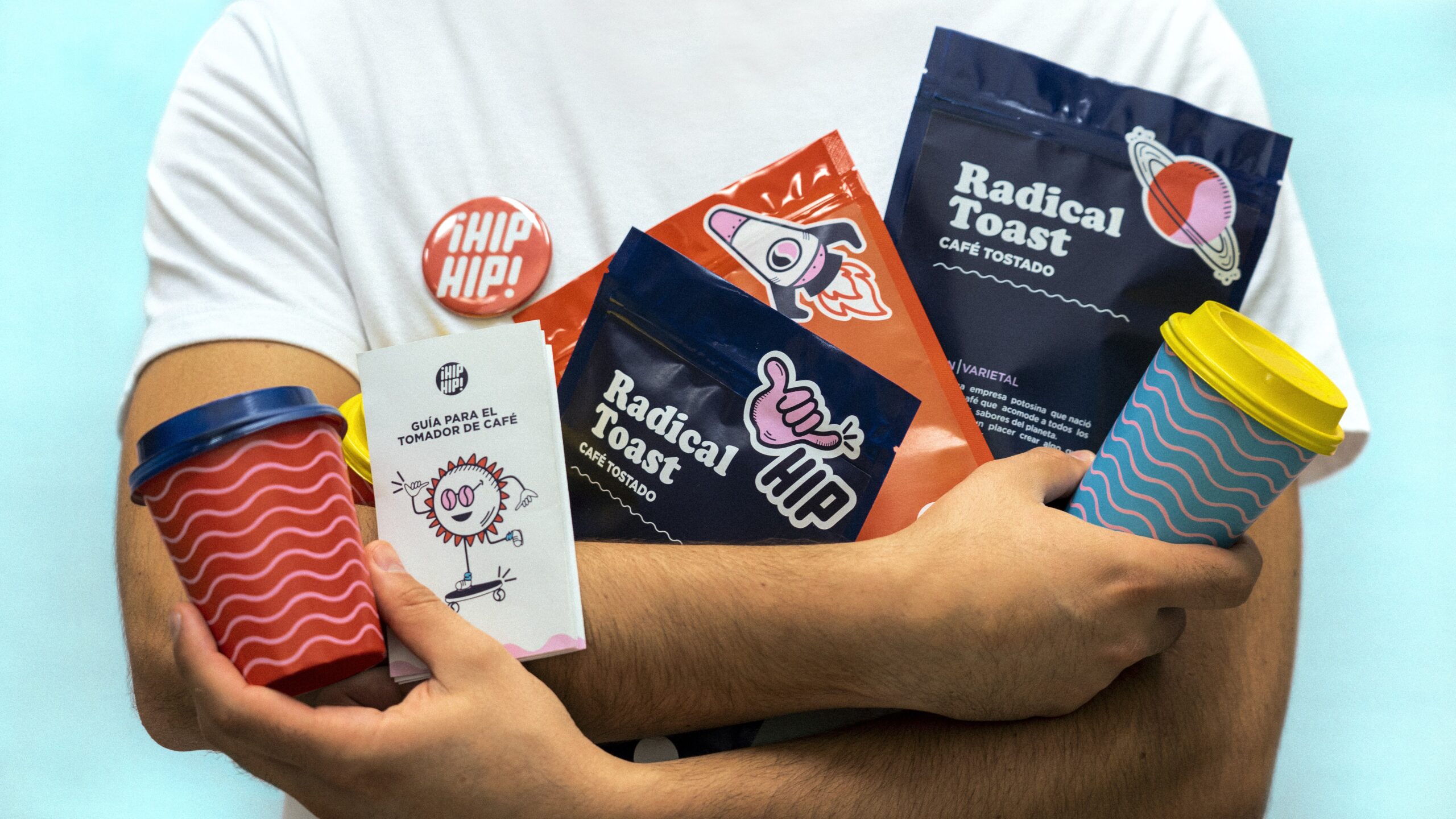

It’s also important to consider the organization you want to sponsor. Make sure that the organization is a good fit for your brand and that its values align with your own. You don’t want to sponsor an organization that could damage your brand’s reputation.
Why do companies do sponsorships?
There are several reasons why sponsorship marketing has become so popular in recent years. Here are just 5 of the mains ones:
- It’s an effective marketing tool - Sponsorship marketing is an effective way to reach new audiences and promote your brand or product. For instance, sponsoring celebrities and athletes could boost your brand's reach as their followers could bring new followers to your brand.
- It builds brand awareness - Sponsorship marketing can help you build brand awareness and create goodwill among potential customers. Take the example of a company sponsoring a charity event. Customers will see that your company is generous and cares about giving back to the community, which could make them more likely to purchase your products or services.
- It enhances brand image - Sponsorship marketing can help improve your brand image by associating your brand with positive values. It could bring new light to your brand's reputation and make it more appealing to potential customers.
- It’s cost-effective - Sponsorship marketing can be more cost-effective than other marketing strategies, such as advertising. This is because you only pay for the sponsorship, not for the ad space or time. Additionally, sponsorships often come with perks, such as free tickets to the event or product discounts, which can save you money.
- It’s a long-term strategy - Sponsorship marketing is a long-term marketing strategy that can provide continuous exposure for your brand or product. For instance, if you sponsor a sports team, your brand will be associated with the team for as long as the team remains active in the scene.
How can small businesses use sponsorship marketing?
There are many ways that small businesses can use sponsorship marketing to promote their brand or product. Here are just 5 of the most popular:
- Sponsoring local events - Many small businesses sponsor local events, such as festivals, parades, or fairs. This is a great way to gain exposure for your brand in the community and build goodwill among potential customers.
- Sponsoring local sports teams - Sports teams are always looking for sponsors, so this is a great option for small businesses. This type of sponsorship will give you continuous exposure for your brand as the team competes in its events.
- Sponsoring charities - Charity sponsorships are a great way to promote positive values along with your brand. This type of sponsorship will show potential customers that your company cares about giving back to the community.
- Exhibiting at trade shows - Trade shows are a great way to reach new audiences and promote your brand or product. Many small businesses exhibit at trade shows to gain exposure for their business.
- Advertising in local publications - Local publications, such as newspapers, magazines, and websites, are always looking for advertisers. This is a great way to reach potential customers in your community and promote your brand or product.
For more sponsorship marketing tips, you can check out this guide on local link building strategies.
Sponsorship Marketing Plan: How To Do It Right
Now that you know the benefits of sponsorship marketing and how small businesses can use it, it’s time to create a sponsorship marketing plan. Here’s how to do it right:
Step 1: Define your goals.
Before you start reaching out to potential sponsors, you need to define your goals. What do you hope to achieve with your sponsorship marketing campaign? Do you want to increase brand awareness, build goodwill, or improve your brand image? Once you know your goals, you can start reaching out to potential sponsors.
Step 2: Research potential sponsors.
Once you know your goals, you need to research potential sponsors that could help you achieve them. There are many factors to consider when choosing a sponsor, such as the size of the company, the products or services they offer, their values, and their target audience. You should also consider the benefits that each sponsor can provide, such as exposure to their audience, discounts on products or services, or free tickets to events.
Step 3: Create a sponsorship proposal.
Once you’ve chosen a potential sponsor, you need to create a sponsorship proposal. This document should outline the benefits of sponsoring your event or activity and how it will help them achieve their goals. Be sure to include information about your audience, your marketing plans, and your sponsorship package options.
Step 4: Negotiate the terms of the sponsorship.
After you’ve created a sponsorship proposal, you need to negotiate the terms of the sponsorship with the potential sponsor. This includes deciding on the level of support they will provide, what benefits they will receive, and how long the sponsorship will last.
Step 5: Activate your sponsorship.
Once you’ve negotiated the terms of the sponsorship, it’s time to activate it. This includes developing marketing materials, such as logos and banners, and promoting the sponsorship to your audience. You should also create a post-event report that outlines the results of the sponsorship and how it helped you achieve your goals.
Sponsorship Marketing Examples
Now that you know the benefits of sponsorship marketing and how to create a sponsorship marketing plan, let’s take a look at some sponsorship marketing examples.
Coca-Cola
Coca-Cola is one of the most well-known brands in the world and they use sponsorship marketing to reach new audiences. For example, they sponsor the Olympics and FIFA World Cup, which give them exposure to millions of people around the world.
McDonald’s
McDonald’s is another well-known brand that uses sponsorship marketing to reach new audiences. They sponsor events like the Olympics and the FIFA World Cup, as well as local events like soccer tournaments and marathons.
Nike
Nike is a leading athletic apparel brand that uses sponsorship marketing to reach new audiences. They sponsor athletes, teams, and events, such as the Olympics and FIFA World Cup.
Samsung
Samsung is a leading electronics brand that uses sponsorship marketing to reach new audiences. They sponsor events like the Olympic Games and the FIFA World Cup, as well as product placement in movies and TV shows.
Subway
Subway is a leading fast-food chain that uses sponsorship marketing to reach new audiences. They sponsor events like marathons and triathlons, as well as local sports teams and schools.
Sponsorship Marketing Proposal Template [FREE]
Cover Letter:
The first page of your proposal should be a cover letter that introduces your organization and briefly summarizes your proposal.
Example Cover Letter:
Dear ________________,
I am writing to introduce you to ______________________________ (name of organization/event). We are a ___________________________ (type of organization) that is dedicated to ___________________________ (purpose of organization). We are hosting a ___________________________ (type of event) on ___________________________ (date of event) and we are looking for sponsors to help us make it a success.
As a sponsor, you would receive ___________________________ (exposure/benefits). This is a great opportunity to ___________________________ (connect with our audience/promote your brand/support our cause). We are confident that this event will be a success and we would be honored to have your support.
Thank you for your time and consideration. If you have any questions, please do not hesitate to contact me at ___________________________ (contact information).
Executive Summary:
The executive summary should be a one-page overview of your sponsorship marketing proposal. It should include your goals, objectives, target audience, and proposed sponsorship package.
One-Page Sponsorship Proposal Template
- Introduction
- Event/Organization Overview
- Sponsorship Opportunities
- Benefits of Sponsorship
- Marketing Plan
Proposed Sponsorship Package:
This section should outline the benefits that your sponsor will receive by supporting your organization. Be sure to include information on your target audience, media coverage, and any other benefits that you can offer.
You can create a table or list to outline your sponsorship package. Be sure to include pricing information and a call-to-action (CTA).
Sample Sponsorship Package:
Gold Level Sponsorship - $5,000
- Logo placement on event website
- Logo placement on all print and digital marketing materials
- Prominent logo placement on event signage
- Logo placement on event t-shirts
- Complimentary booth space at event
- 10 complimentary tickets to event
Silver Level Sponsorship - $2,500
- Logo placement on event website
- Logo placement on all print and digital marketing materials
- Logo placement on event signage
- Logo placement on event t-shirts
- 5 complimentary tickets to event
Bronze Level Sponsorship - $1,000
- Logo placement on event website
- Logo placement on all print and digital marketing materials
- Logo placement on event t-shirts
- 2 complimentary tickets to event
Frequently Asked Questions:
How does sponsorship increase sales?
Sponsorship can increase sales in a number of ways. First, it can create awareness for your brand and increase brand recognition. Second, it can help you reach new audiences that may be interested in your products or services. Third, it can build goodwill and positive associations with your brand. Finally, it can provide you with an opportunity to upsell and cross-sell your products or services.
What is the difference between sponsorship and direct marketing?
The main difference between sponsorship and direct marketing is that sponsorship is a long-term investment, while direct marketing is a short-term strategy. Sponsorship also allows you to build brand awareness and create positive associations with your brand, while direct marketing is focused on generating immediate sales.
What makes a good sponsorship?
A good sponsorship should align with your brand and marketing goals. It should also reach your target audience and provide you with a way to connect with them on a deeper level. Finally, it should offer you value for your investment, whether that be in the form of brand awareness, sales, or goodwill.
What is the main goal of a sponsorship presentation?
The main goal of a sponsorship presentation is to convince potential sponsors to invest in your event or organization. To do this, you will need to provide an overview of your event or organization, as well as the benefits that sponsors will receive by supporting you. You will also need to have a solid marketing plan in place that outlines how you will reach your target audience and generate awareness for your event or organization.
What makes a sponsorship successful?
There are a number of factors that can contribute to a successful sponsorship. First, it is important to have clear and achievable goals. Second, your sponsorship package should be attractive to potential sponsors and provide them with value for their investment. Finally, you need to have a solid marketing plan in place that will reach your target audience and generate awareness for your event or organization.
What are some common goals of sponsorship?
Some common goals of sponsorship include increasing brand awareness, reaching new audiences, building goodwill, and generating sales.
Why your marketing plan should include sponsorship?
Your marketing plan should include sponsorship because it is a proven way to reach your target audience, build brand awareness, and generate sales. Sponsorship also allows you to build goodwill and create positive associations with your brand.
15 Places To Advertise Your Business Online (For Small Business Owners)
The marketing world is dynamic and always changing, which is why small businesses need to be proactive and adapt their strategies as new platforms and trends emerge.
And while traditional marketing methods like print, radio, and TV advertising are still viable options, nowadays, most consumers do their research online before making a purchase, which is why it’s so important for small businesses to have a strong online presence.
That's where online advertising comes in. By placing ads on popular websites and search engines, small businesses can reach a larger audience and generate more leads and sales.
In fact, by 2026, advertising online will be a $335 billion industry. That being said, every small business should be taking advantage of online advertising.
To determine which ones are the best for your business, you need to consider your budget, your target audience, your location, and your advertising goals.
In this article, you will learn:
Table of Contents
15 Advertising Opportunities For Small Business Owners
Here are 15 different ideas for places to advertise your business online. These platforms are all effective and affordable, so you can choose the one that best suits your needs.
1. Google
As one of the largest search engines in the world, Google receives billions of searches every day.
That means there’s a good chance that people looking for products or services like yours are using Google to find what they need.
Google ads have taken a giant step forward since it became the leading local business directory. According to Corporate Eye, Google makes up almost 97% of the company's income through Google advertising.
With Google Ads, you can create text, image, and video ads that show up on Google’s search engine results pages (SERPs) when people search for keywords related to your business.
You only pay for your ad when someone clicks on it, so you can control your budget and only spend what you’re comfortable with.
Types of Google Ads:
Text Ads: These are the traditional Google ads that you see on the SERPs. They consist of a headline, two descriptions, and a URL.
Image Ads: These ads can appear on the SERPs and on websites that participate in Google’s Display Network. They can be static or animated and usually include images and/or videos.
Video Ads: These are video ads that appear on YouTube and websites that participate in the Google Display Network.
2. Facebook
Facebook is the largest social media platform in the world, with 2.9 billion monthly active users.
It’s a great place to advertise your business because you can target your ads to people based on their interests, demographics, and even behaviors.
For example, if you want to reach people who live in a certain area and are interested in your type of product or service, you can create a Facebook ad campaign specifically for them.
You can also use Facebook ads to boost your posts, so more people see them in their newsfeeds. When you boost a post, it appears as an ad on people’s timelines.
Types of Facebook Ads:
Boosted Posts: These are posts from your Facebook page that you pay to appear as an ad in people’s newsfeeds.
Promoted Page Likes: These ads appear in people’s newsfeeds and are designed to get more people to like your page.
Clicks to Website: These ads send people to your website from Facebook. They can appear in people’s newsfeeds, on the right side of the screen, or as an ad in Instant Articles.
Website Conversions: These are similar to Clicks to Website ads but are designed to get people to take a specific action on your website, such as filling out a form or buying a product.
3. Instagram
With over 1 billion monthly active users, Instagram is a great place to reach potential customers, especially if you’re targeting millennials or Gen Z.
Instagram ads work similarly to Facebook ads. You can target people based on their interests, demographics, and behaviors.
You can also use Instagram ads to promote your posts, so they appear as ads in people’s feeds.
Types of Instagram Ads:
Photo ads: These are static images that you can use to show off your products or services.
Video ads: Through reels or short videos, you can show potential customers a behind-the-scenes look at your business or showcase your products in action.
Carousel ads: These are ads that contain multiple images or videos that people can scroll through. They’re a great way to showcase different products or services that you offer.
Stories ads: These are short videos or images that appear in between people’s Stories. They’re a great way to grab attention and get your message across quickly.
4. Twitter
With over 206 million daily active users, Twitter is another great social media platform for advertising your business.
Twitter ads work similarly to other social media platforms like Facebook and Instagram. You can target people based on their interests, demographics, and behaviors.
You can also use Twitter ads to promote your tweets, so they appear as ads in people’s timelines.
Types of Twitter Ads:
Promoted tweets: These are tweets that you pay to appear as an ad in people’s timelines. For small businesses, this is a great way to get your tweets seen by more people.
Promoted accounts: You can pay to have your Twitter account appear as an ad in the “Who to follow” section on people’s timelines.
Promoted trends: These are trending topics that you pay to appear as an ad on people’s timelines.
5. LinkedIn
LinkedIn is a social media platform specifically for professionals. With over 810 million users, it’s a great place to reach potential customers or clients who are decision-makers in their companies.
LinkedIn ads work similarly to other social media platforms like Facebook and Instagram. You can target people based on their interests, demographics, and behaviors.
You can also use LinkedIn ads to promote your posts, so they appear as ads in people’s feeds.
Types of LinkedIn Ads
There are different types of LinkedIn ads that you can use:
Sponsored content: This is content that you pay to appear as an ad in people’s feeds. It can be a blog post, article, or video.
Text ads: These are short, text-based ads that appear in the right-hand column of people’s LinkedIn feeds.
Display ads: These are banner ads that appear on people’s LinkedIn feeds.
6. Tiktok
While there are many businesses who are hesitant about advertising their business on Tiktok, there are many opportunities for businesses to reach potential customers on the app.
In 2021, Tiktok was the most downloaded app in the world. It has been downloaded 2.6 billion times worldwide, and with over 1 billion monthly active users, it’s a great place to reach potential customers, especially if you’re targeting Gen Z.
TikTok advertisements could be a good investment for you if your business appeals to a younger audience. This isn't the platform for businesses that target older audiences, with 66% of TikTok's users being under 30 (41% are 16–24 years old).
Types of Tiktok Ads:
There are different types of TikTok ads that you can use:
In-feed ads: These are short videos or images that appear in between people’s TikTok videos.
Brand takeovers: These are ads that appear when someone opens the app. They’re a great way to grab attention and get your message across quickly.
Hashtag challenges: These are ads that appear when someone searches for a specific hashtag. They’re a great way to get people engaged with your brand.
7. Reddit
Quite different from the previously mentioned social media platforms, Reddit is a social media platform where people can post content, vote on content, and comment on content on different subreddits. Subreddits are like mini forums on specific topics.
Content that gets the most upvotes rises to the top of the feed, while content with the most downvotes sinks to the bottom. People can also comment on posts, and these comments can be upvoted or downvoted as well.
With over 50 million daily active users, Reddit is a great place to reach potential customers. However, because of its unique format, it can be a challenge to advertise on Reddit.
The best way to advertise on Reddit is through native advertising, which is advertising that is in the same format as the other content on the platform.
New Reddit marketers should be cautious about how they promote their business on Reddit, as the community is quick to call out anything that looks like spam. Breaking simple rules like title structure, linked video length, or image use might result in your post being immediately removed and even your account being banned.
The key to getting success on Reddit is to be truly authentic. Don’t try to hard-sell your product, but rather provide value and be helpful.
8. Youtube
Youtube is a video-sharing site where users can upload, view, and share videos. It’s the second largest search engine after Google, and with over 2 billion monthly active users, It's also an excellent platform to attract new consumers.
As video is one of the most consumed forms of content, it’s no surprise that businesses are using Youtube to reach potential customers. In fact, 6 out of 10 people would rather watch online videos than television.
Successful business owners are using Youtube to create valuable content that educates, entertains, and inspires their target audience. However, with over 500 hours of video being uploaded to Youtube every minute, it can be a challenge to stand out from the crowd.
To be successful on Youtube, you need to create high-quality content that is relevant to your target audience. You also need to be strategic about your marketing and use Youtube ads and SEO to get your videos in front of as many people as possible.
Types of Youtube Ads
Youtube ads come in a few different forms:
Pre-roll ads: These are short ads that play before a video starts. They can be skipped after 5 seconds.
Mid-roll ads: These are ads that play in the middle of a video. They can be skipped after 5 seconds.
Bumper ads: These are short, unskippable ads that play before, during, or after a video.
Overlay ads: These are banner ads that appear on the bottom 20% of a video.
Card ads: These are small ads that appear in the corner of a video.
9. Quora
Quora is a Q&A platform where people can ask questions and get answers from experts in the community. It’s a great place to find out about new products and services, as well as to learn about different topics.
While Quora isn’t traditionally thought of as a social media platform, it can be a great way to connect with potential customers. This is because people come to Quora when they’re looking for information, which means they’re already in the research phase of the buying cycle.
To be successful on Quora, you need to focus on providing value. This means answering questions honestly and helpful, without trying to hard-sell your product.
You should also take advantage of Quora’s targeting features to make sure your content is being seen by people who are most likely to be interested in what you have to offer.
While some may only see it as a Q and A platform, Quora is actually a great way to get in front of your competitors using Quora ads.
Why Use Quora Ads?
There are a few reasons why you would use Quora ads as an additional platform for online advertising:
- Quora is a search engine: This means that when people are looking for information on Quora, they already have the intent to buy your product. This makes Quora a great place to target potential customers who are already interested in your product.
- You can target specific interests: Quora allows you to target your ads to specific interests, which means you can reach people who are more likely to be interested in your product or service.
- You can target specific questions: Quora also allows you to target specific questions, which means you can get your ad in front of people who are already looking for information about your product or service.
Quora Ad Formats:
Quora's advertising formats are:
Promoted answers: These are answers that appear at the top of a question page.
Promoted questions: These are questions that appear in the sidebar of a topic page.
Display ads: These are banner ads that appear on the Quora website.
10. Bing
Bing is a search engine that is owned by Microsoft. It’s the second-largest search engine in the world, with a market share of 20%.
While Bing doesn’t get as much traffic as Google, it’s still a valuable platform for businesses. This is because people who use Bing are generally more affluent and have higher incomes.
This makes Bing a great place to target potential customers who are more likely to be able to afford your product or service.
To be successful on Bing, you need to focus on creating high-quality ads that are relevant to your target audience. You should also use keyword research to make sure your ads are being seen by people who are searching for terms related to your business.
Bing Ads allows you to advertise on both Bing's search network and its partner networks, Yahooo and AOL.
Ad Formats of Bing:
Bing's advertising formats are:
Search ads: These are text-based ads that appear at the top of the Bing search results page.
Display ads: These are banner ads that appear on websites in the Bing network.
11. Pinterest
Pinterest is a powerful traffic-generating tool. It's a marketplace where consumers may discover amazing products, ideas, and solutions to their problems.
As a business, you can take advantage of this by creating pins that showcase your products or services. You can also use Pinterest to drive traffic to your website or blog.
As of this writing, there are 478 million people who use this platform every month to find ideas for their next purchase. That being said, this platform should be added to your online marketing strategy in order to reach your preferred audience.
To be successful on Pinterest, you need to constantly focus on creating high-quality pins that your audience will want to save. You should also use keywords in your descriptions to make sure your pins are being seen by people who are searching for terms related to your business.
Ad Formats of Pinterest:
Pinterest's advertising formats are:
Standard pins: These are pins that appear in the main Pinterest feed.
Promoted pins: These are pins that appear at the top of the Pinterest search results page and in the home feed.
Carousel ads: These are pins that appear in the form of a slideshow.
Video Pin Ads: These are video pins that appear in the main Pinterest feed.
Shopping Pins: These are pins that allow users to purchase products directly from retailers.
App-Install Pins: These pins allow you to link to any Apple Store or Google Play app URL.
12. Waze
Waze is a GPS navigation app that is owned by Google. It’s used by millions of people every day to get around town.
While Waze doesn’t have as many users as Google Maps, it’s still a valuable platform for businesses. This is because people who use Waze are generally more engaged and are more likely to take notice of your ad.
If you're a small business owner who's constantly looking for ideas on how to drive more foot traffic to your store, then Waze might be a good fit for you.
To be successful on Waze, you need to make sure your ad is relevant to the user’s current location.
Waze's advertising formats are:
Branded pins - This serves the same purpose as shop signs: They tell and remind drivers about your business.
Promoted search - Your business will be displayed to large audiences when Waze users search for your name and see all of your locations listed first.
Nearby arrow - Whenever nearby users open the app, this arrow will immediately appear on their screen.
13. Press Releases
A press release is a written statement that is distributed to the media to generate publicity for a product, service, or event.
Press releases can be an effective way to reach your target audience through the media. So whether your business is opening a new branch, launching a new product line, rebranding, or moving to a new location, it's worth it to write and distribute a press release.
When writing a press release, make sure to include the following:
- A catchy headline
- Subheadings
- Bulleted lists
- Quotes from experts or customers
- A call to action
To be successful with press releases, you need to make sure your press release is newsworthy and well-written. You also need to distribute your press release to the right media outlets.
Here are some popular press release distribution platforms:
- PR Newswire
- PRWeb
- Business Wire
- Marketwired
Press releases are not only effective for getting publicity but they can also be used to improve your website's SEO. This is because press releases often contain backlinks to your website.
14. Snapchat
Snapchat is a popular social media app that allows users to share photos and videos with their friends.
While Snapchat doesn’t have as many users as Facebook or Instagram, it’s still a valuable platform for businesses. This is because Snapchat users are generally younger and more engaged than users of other social media platforms.
If you're targeting millennials or Gen Zers, then Snapchat ads should definitely be a part of your marketing strategy.
To be successful on Snapchat, you need to create engaging and creative content. This could include short videos, behind-the-scenes footage, or even just stylish photos.
Snapchat's advertising formats are:
Snap ads: These are short video ads that appear between Stories.
Collection ads: These are full-screen ads that appear in the Discover section.
Filter ads: These are creative filters that can be used by Snapchat users.
Lenses: These are animated effects that can be used by Snapchat users.
15. Whatsapp
Last but not the least, Whatsapp is one of the most popular messaging apps with over 1.5 billion monthly active users.
While Whatsapp doesn't have any in-built advertising features, businesses can still use it to reach their target audiences by creating posts through Facebook ads manager.
Tips on WhatsApp Advertising:
- Keep your messages short and to the point
- Use engaging visuals
- Use a call to action
- Create a sense of urgency
Common FAQs About Places to Advertise Online
How do I advertise my business locally?
There are a number of ways to advertise your business locally. Some common methods include:
- Creating a website or blog and optimizing it for local SEO
- Creating listings on local directories and review sites
- Using social media to promote your business
Where else can I advertise my business for free?
On top of the ones we mentioned above, there are a number of other ways to advertise your business for free. These include:
- Google My Business
- Bing Places
- Apple Maps
- Yelp
- TripAdvisor
How can I promote my business?
There are a number of ways to promote your business online. Some common methods include:
- Social Media Marketing
- Search Engine Optimization: link building, local SEO, mobile SEO
- Content Marketing
- Email Marketing
- Pay-Per-Click Advertising
How do I get my small business noticed?
There are a number of ways to get your small business noticed online.
- Creating a strong social media presence
- Strategizing your local link building strategies for your business
- Optimizing your website for search engines
- Creating informative and shareable content
- Advertising on relevant platforms
- Getting involved in your local community
Where do I find ads?
There are a number of places you can find ads online. Some popular platforms include:
- Google AdWords
- Bing Ads
- Facebook Ads
- Twitter Ads
- Instagram Ads
Are online ads effective?
Online ads can be effective if they are well-targeted and relevant to your audience. According to statistics, 26% of social media users tend to purchase products that they see advertised.
Make sure to test different ad formats and placements to see what works best for your business.
What is an example of online advertising?
Some common examples of online advertising include:
- Search Engine Advertising
- Display Advertising
- Social Media Advertising
- Video Advertising
- Native Advertising
Find the Best Place To Advertise Your Business
Now that you have a better understanding of the different types of online advertising, you can start to identify which platforms will work best for your business.
To get started, we recommend conducting a market analysis to understand your target audience and what type of content they are most likely to engage with. Make sure to consider your budget, business goals, and target audience when choosing the best place to advertise your business.
Once you have this information, you can always start experimenting with different advertising platforms to see what works best for you.
With a little bit of trial and error, you should be able to find the perfect mix of platforms to help you achieve your desired results.
